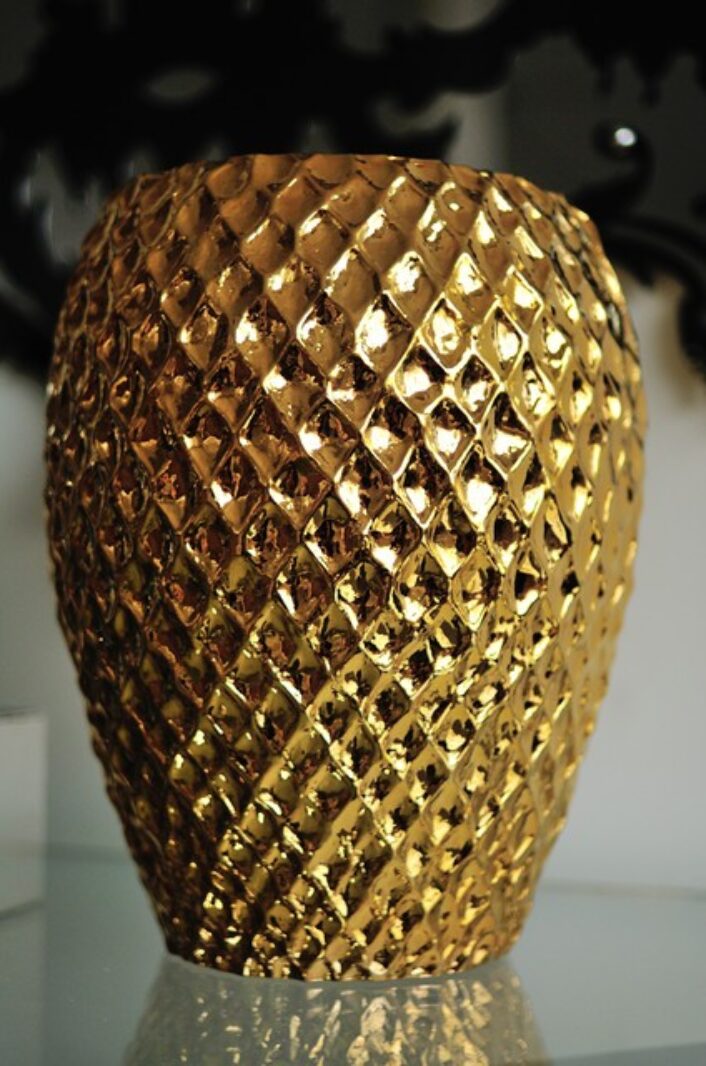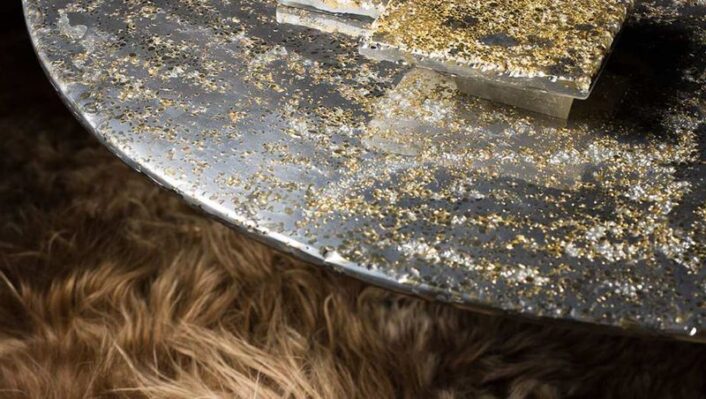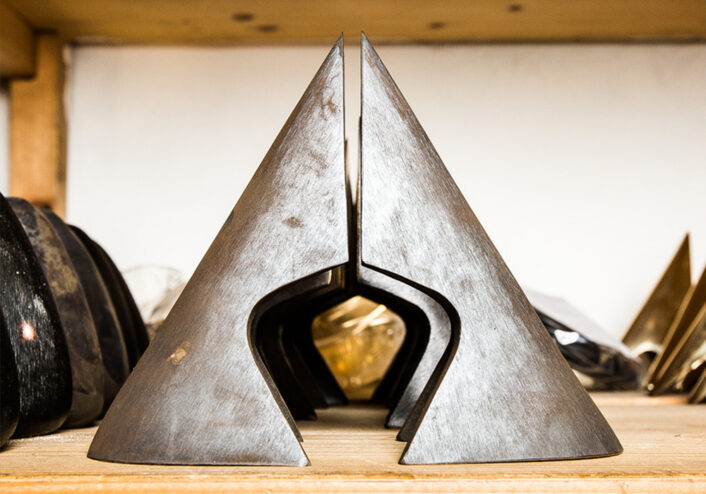Design
Osanna Visconti di Modrone’s bronze
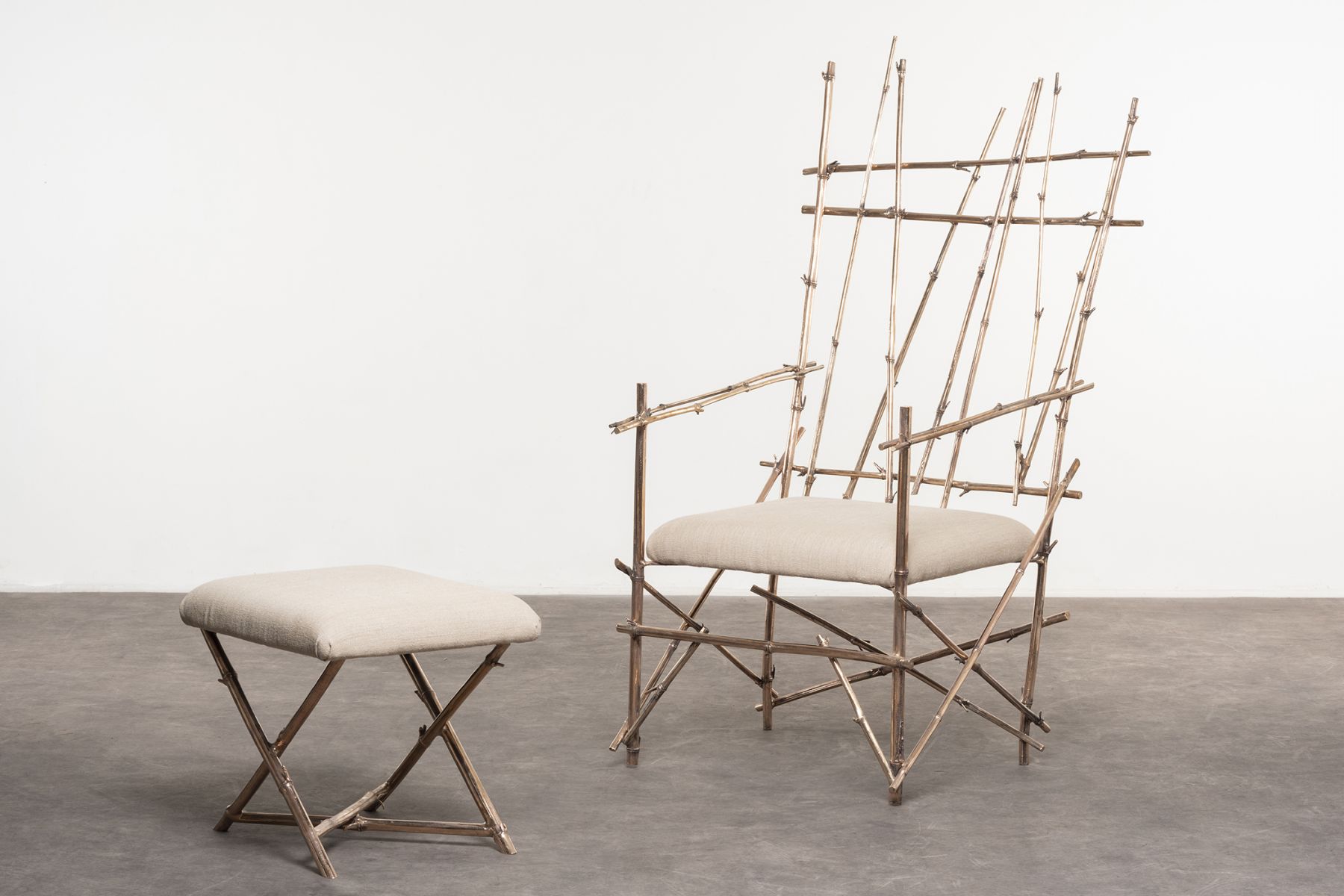
An armchair from the “Bamboo Collection,” 2020. Nilufar edition and natural bronze.
Image courtesy of: Nilufar
Growing up in Italy, it is not surprising that Osanna Visconti di Modrone was surrounded by an infinite number of amazing influences from artwork to architecture to design. As a young child, Osanna and her sister would often play (courtesy of The Invisible Collection) “with pieces of art created for their mother by Lucio Fontana, Mario Ceroli and Arnaldo Pomodoro.”
Osanna’s education was comprised of academics at Accademia della Moda e del Gioiello, an apprenticeship under the goldsmith Teresa Schwendt in Rome, and a job at Christie’s fine jewelry department in New York City. The designer soon realized her desire to make rather than sell… she started by making cast bronze jewelry. From the start, Osanna used a foundry employed by some of Italy’s most famous sculptors, Fonderia Artistica Battaglia. Her work quickly began to include accessories and eventually, small furniture pieces.
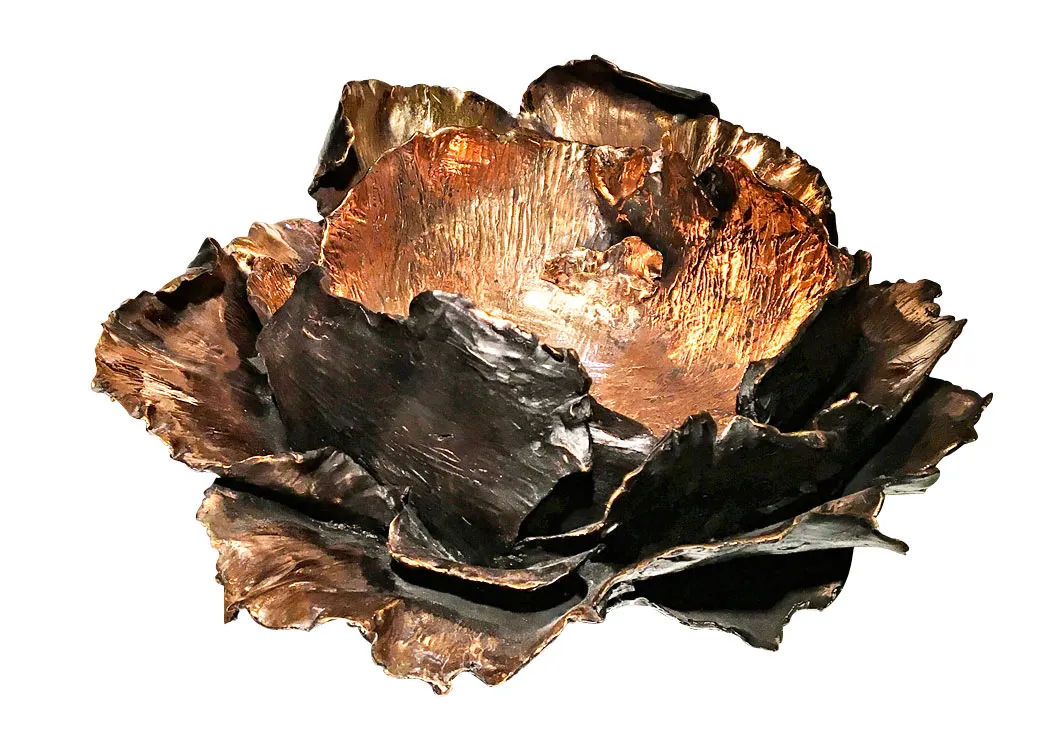
A bronze bowl. Interestingly, Greek and Roman artisans have been using lost wax casting techniques since discovering bronze 3,000 years ago.
Image courtesy of: Architectural Digest
For the past several years, Osanna has primarily designed objects and furniture. She calls her pieces (courtesy of Surface Magazine), “jewels for the home.” Her designs are both decorative and functional… and all are made from natural bronze using the lost wax casting technique.
For Osanna, part of the intrigue lies in that the technique dates back 6,000 years; it is considered one of the oldest known metal-forming techniques to be documented. The process uses negative forms into which molten metal is cast. A wax sculpture is used to created a plaster mold. When the wax dries inside the furnace at the high temperature of 650° Celsius, the negative that is etched out is filled with liquid bronze for casting. Ossana then shapes the wax model by hand… this is what makes her creations unique.
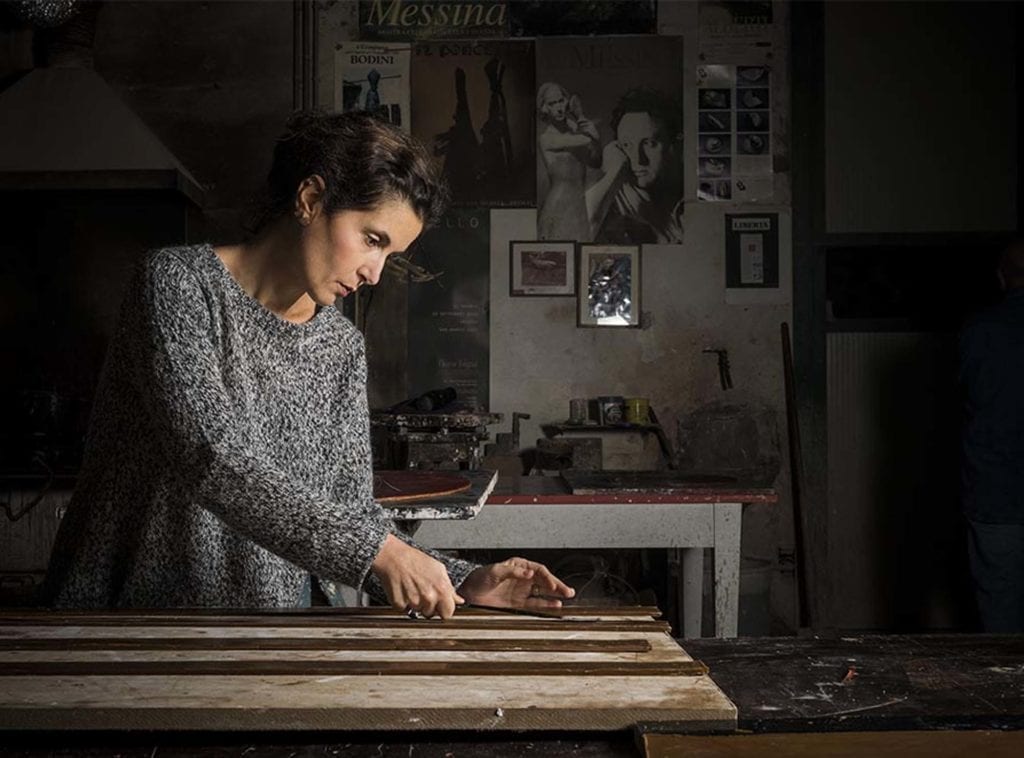
Osanna at work. Several years ago, her daughter, Madina, joined the atelier. Osanna says that she has been amazed at learning from a “young perspective.” With her own style… modern and romantic… Madina specializes in jewelry… this has allowed Osanna to develop the furniture collection.
Osanna says that she is inspired by nature. As told to Surface Magazine, the designer said, “in the silence of a walk in the woods, my attention is captured by a leaf, a fallen branch. One out of hundreds. I choose it and pick it up. It is a gift from nature that I celebrate through my creativity and then freeze in time, transforming it into a piece of bronze.”
Image courtesy of: The Invisible Collection
Osanna learned her craft in the basement of a building in Rome; there, she would spend days upon days modeling wax… taking in her surrounding’s amazing aura. Today, her home is also her workshop and her vision is brought to fruition by artisans from Milan’s top foundries.
Living in a 17th-century building has its own benefits.. mainly the inspiration that comes from all the beauty and history that resides inside. Original wooden beams flank the ceilings and the building’s doors are untouched… you can almost envision horse-drawn carts coming and going.
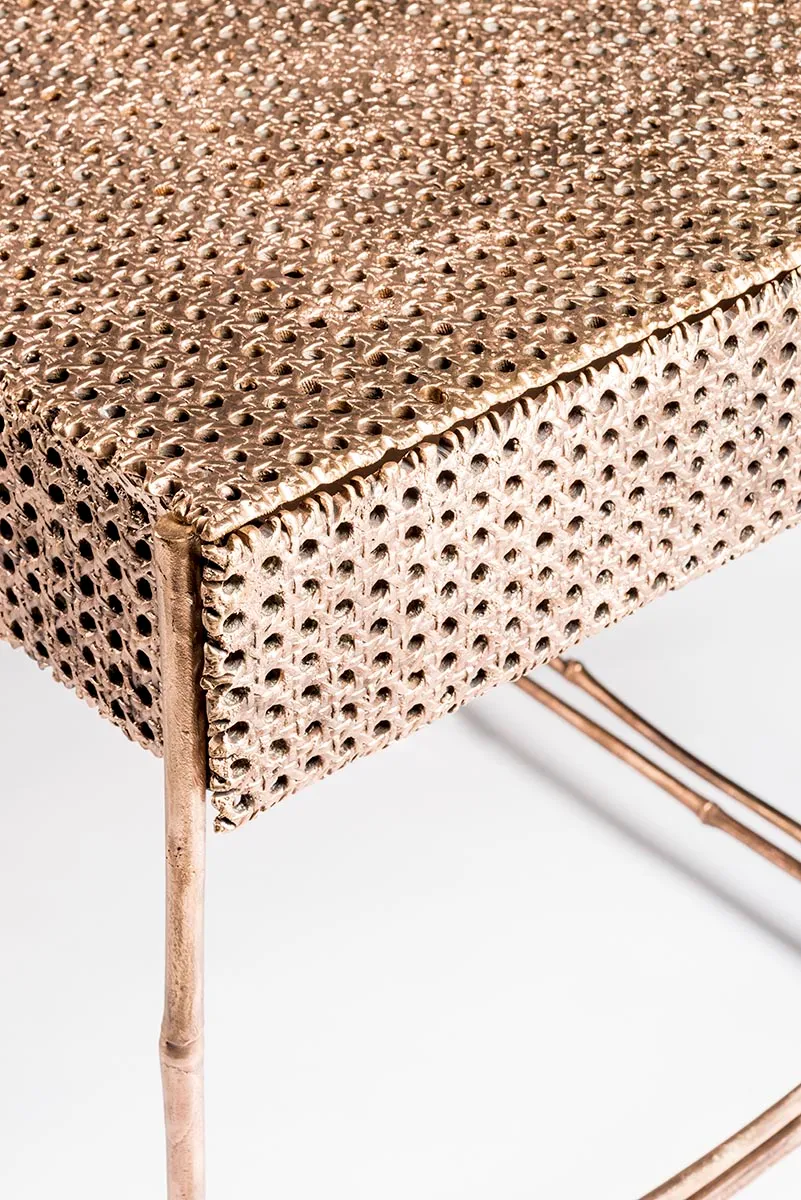
Paglia di Vienna Coffee Table in bronze. The coffee table is molded with Paglia di Vienna Straw texture and fused with natural bronze using Osanna’s lost-wax casting technique. Each table is handcrafted, made in Italy, and one-of-a-kind.
Image courtesy of: Osanna Visconti
A few years ago, Osanna was asked to join The Invisible Collection’s prestigious group of roughly 80 high-design artisans. In 2015, Osanna met Isabelle Dubern, co-founder of The Invisible Collection, at Salon del Mobile in Milan. Both Dubern and her co-founder, Anna Zaoui, were immediately infatuated by the designer. Already on the search for unique Italian talent, the pair immediately asked Osanna to commission for them.
For Dubern, she says that Osanna’s tables remind her of (courtesy of Financial Times) “18th-century French furniture, when pieces were made to be constantly moved around. I’ll often take them down into the dining room as serving tables for guests when I have a dinner.” The Invisible Collection has a large number of offerings by the artist, including candelabras, nesting tables, serving spoons, and screens.
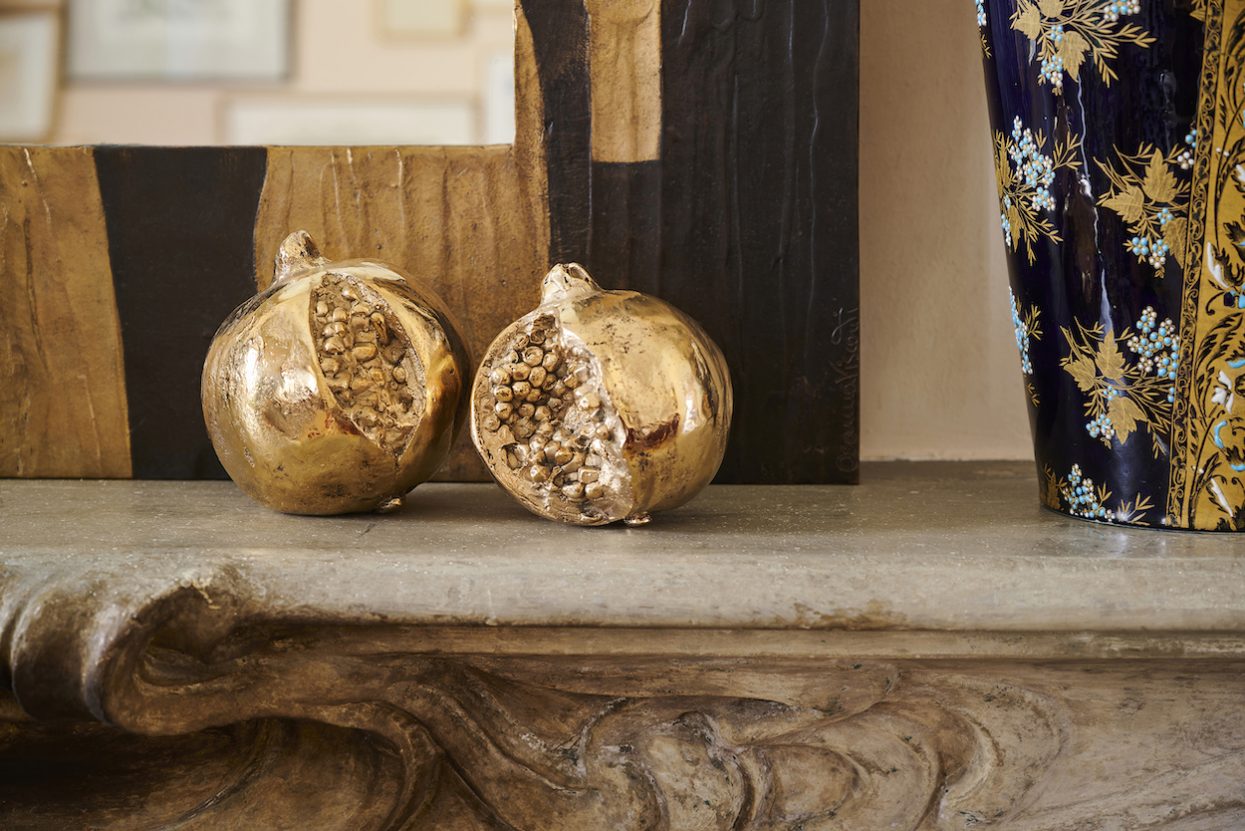
Melogrando in Bronze 10d. The object was molded with a real pomegranate and fused in natural bronze using the lost-wax casting technique.
Image courtesy of: Surface Magazine, photographed by: Valentina Sommariva
Osanna’s methods differ in that rather than sketching her ideas, she initially sculpts. During the process, Osanna immerses the solid wax in hot water and then molds it by hand. These skeletal sculptures form the foundation of the finished piece. However Osanna is quick to point out that it is not cast until it, in Visconti words, “sizzled” in the furnace, that it finds its true form.”
About her work, Osanna said, “I create useful pieces that span beyond time and space. Pieces I would love to find and use each day.” Beautiful!
